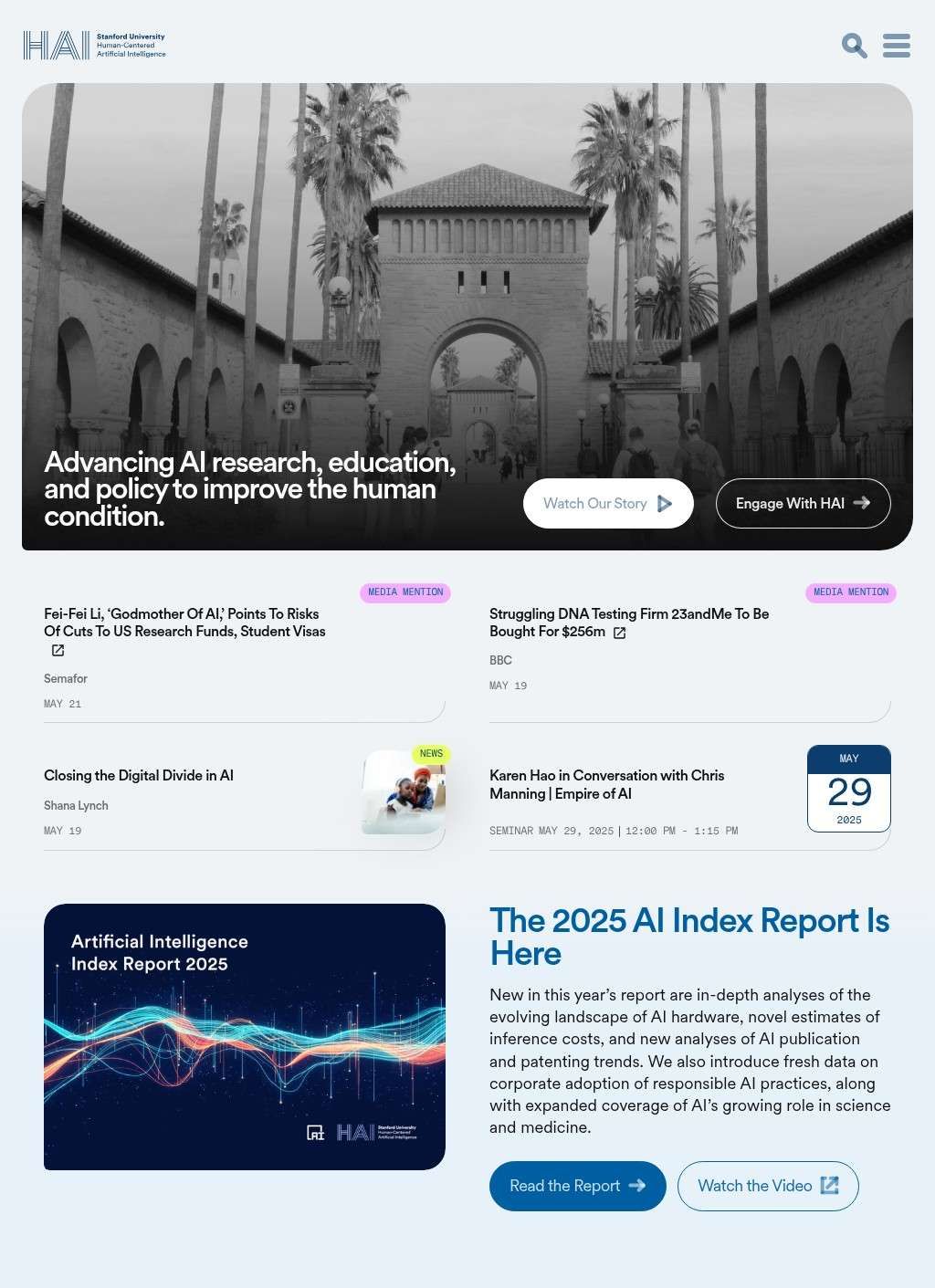Stanford HAI emerged in 2019 from a simple but powerful observation: AI was advancing at breakneck speed, but nobody was seriously asking whether all this technology was actually making life better for humans. The institute represents Stanford's massive bet that the future of AI needs philosophers, economists, and ethicists just as much as it needs computer scientists. Co-founded by AI pioneer Fei-Fei Li and former Stanford Provost John Etchemendy, HAI has quickly become the go-to source for thoughtful analysis of AI's impact on society.
The institute's crown jewel is the AI Index Report, an annual publication that's become required reading for anyone serious about understanding AI trends. Unlike corporate white papers that cherry-pick favorable data, the AI Index provides brutally honest assessments of where AI stands. The 2025 edition reveals fascinating contradictions: private AI investment hit record highs while academic institutions struggle to keep talent, AI systems smashed performance benchmarks while real-world deployment remains frustratingly limited. This isn't just number-crunching—it's storytelling with data, making complex trends accessible to policymakers who might not know a neural network from a fishing net.
HAI's research spans an impressive range, but what sets them apart is their interdisciplinary approach. Take their recent collaboration with filmmakers on "Stories for the Future"—they brought sci-fi writers together with AI researchers to imagine new narratives about AI that go beyond the tired "robots will kill us all" trope. Another project examines how frequent chatbot use correlates with loneliness, a finding that made headlines worldwide. They're asking the uncomfortable questions that pure tech companies tend to avoid: What happens to human relationships when AI becomes our primary conversation partner? How do we ensure AI enhances rather than replaces human capabilities?
The institute operates as a hub connecting academia, industry, and government. They don't just publish papers—they actively engage with policymakers to shape AI regulation. Their faculty members testify before Congress, advise federal agencies, and participate in international AI governance discussions. When the White House needs expertise on AI ethics, they call Stanford HAI. When tech companies want to understand the broader implications of their AI systems, they partner with HAI researchers. This positioning as a neutral broker between different stakeholders gives them unique influence in shaping AI's future.
Education forms a crucial pillar of HAI's mission. They offer executive education programs for business leaders trying to understand AI's strategic implications. Their fellowship programs bring together scholars from diverse fields—a philosopher might work alongside a roboticist to explore questions about AI consciousness. They've developed AI curriculum modules that schools across the country can adopt, ensuring that the next generation understands both AI's technical aspects and its societal implications. The Global AI Vibrancy Tool they've developed lets anyone compare AI development across countries, tracking everything from research output to startup formation.
For those seeking to engage with Stanford HAI, multiple avenues exist. Their website features a newsletter signup that delivers weekly updates on research breakthroughs, policy developments, and upcoming events. They host regular symposiums open to the public, both in-person at Stanford and virtually. Researchers can propose collaborations through their partnership programs. Media inquiries go through their communications team, who are notably responsive compared to typical academic institutions. General feedback and research ideas can be sent to nmaslej@stanford.edu. The institute also accepts philanthropic support, with online donation options clearly marked on their website.
